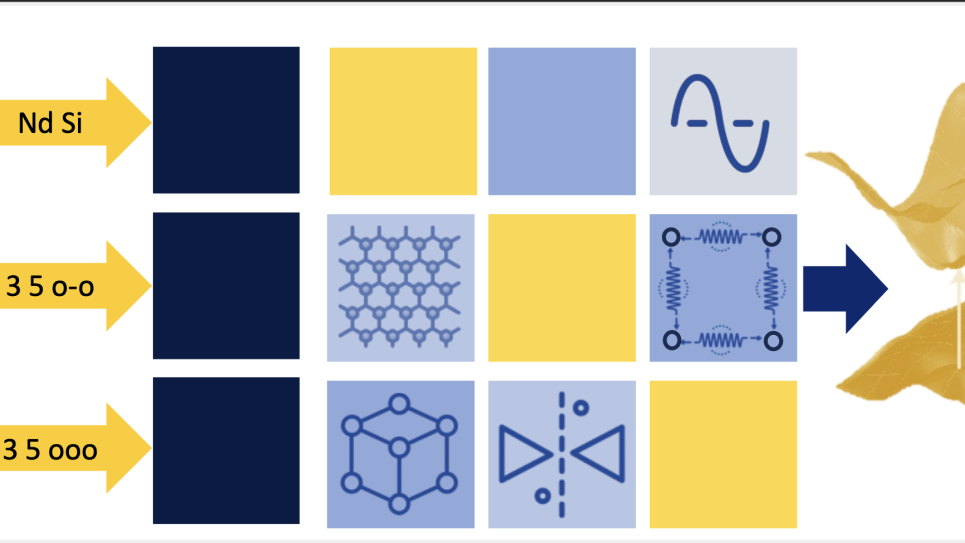
Foundation models for crystalline materials for energy storage and conversion applications. Image: Anoushka Bhutani, University of Michigan
Electrode materials are crucial for the performance of energy fstorage and conversion devices in various applications, such as electric vehicles, grid storage, and electric aircraft. However, each application has unique requirements, including conductivity, stability, and safety for electric vehicles; scalability and cost-effectiveness for grid storage; and light weight with high power density for electric aircraft. The high cost of experimentation and known stable crystals containing various amounts of the charge carrier (e.g. lithium, sodium) hinders the development of suitable energy storage materials to meet these demands. Advances in foundation models that leverage large unlabeled datasets offers a pathway to address this challenge. While existing foundation models have demonstrated state-of-the art performance for small molecules, the development of foundation models for crystals are still nascent. This project aims to develop a large-scale crystal dataset consisting of unrelaxed geometries leveraging symmetry-respecting encodings. Utilizing this dataset, the team will train a compute-optimal foundation model capable of accurately predicting thermodynamics, mechanical properties, thermal properties, enabling the efficient design of materials for energy storage and conversion.